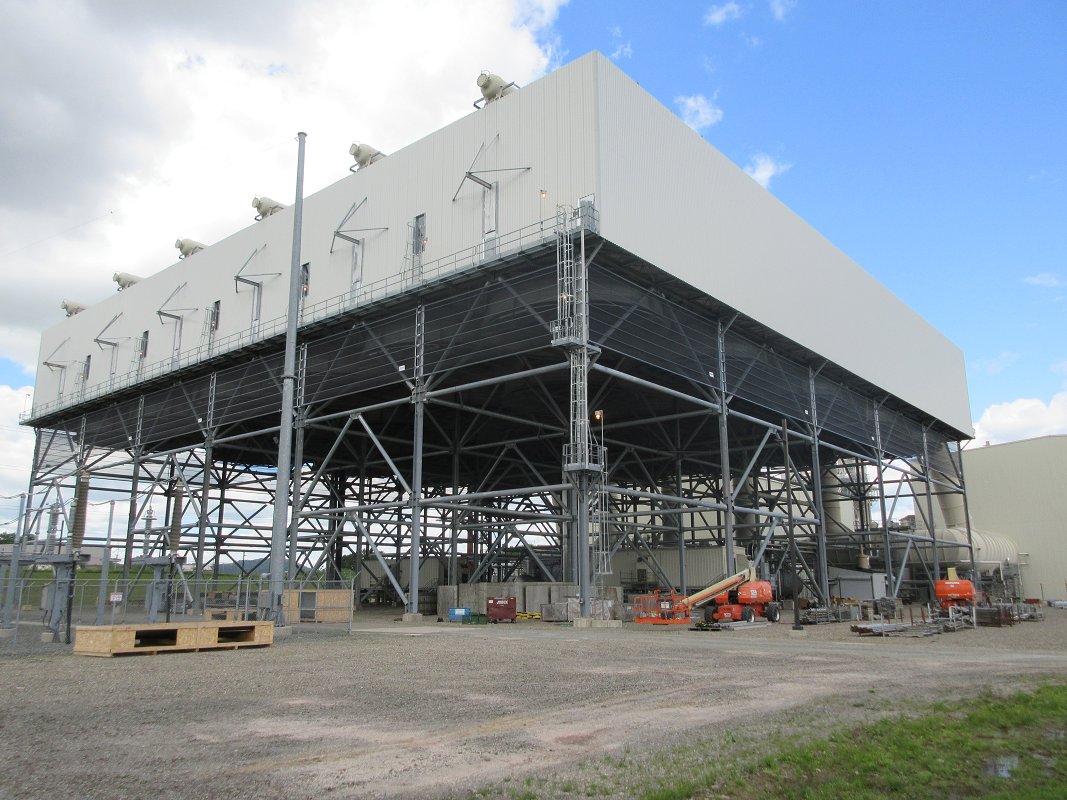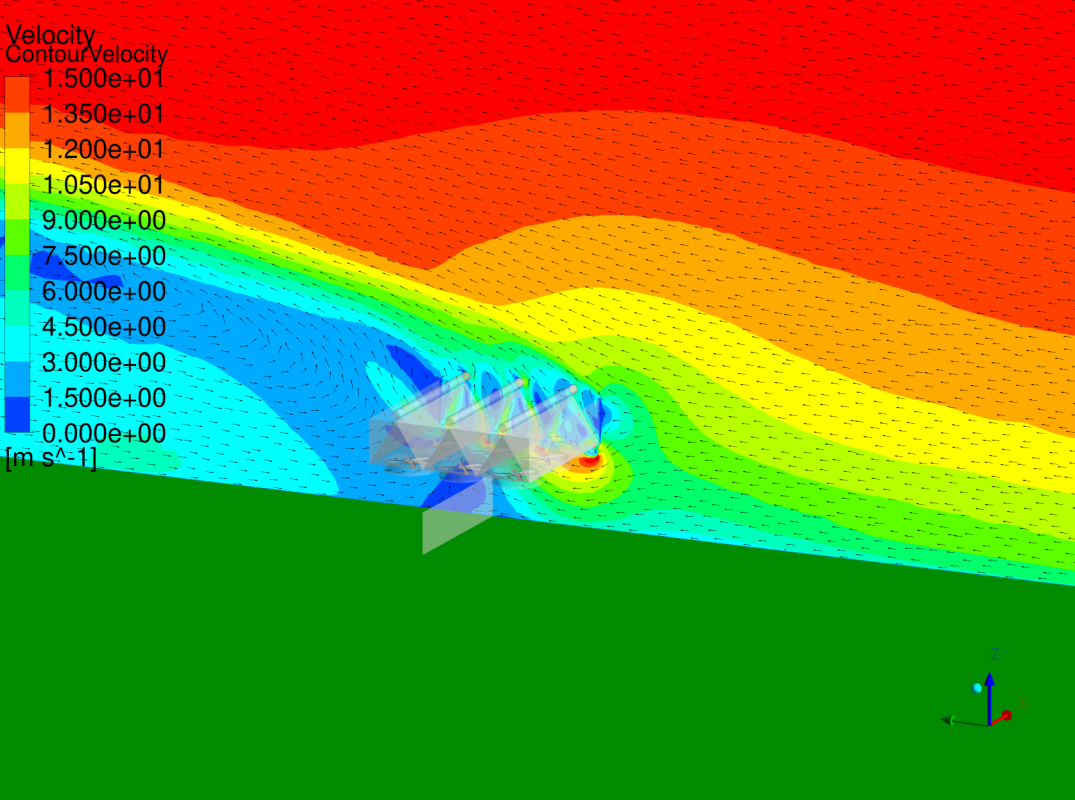Optimising performance of Air-Cooled Condensers using Windshields
Air Cooled Condensers (ACC) are prone to a substantial decay of efficiency and the onset of fan blade fluctuations in case of strong wind. Windscreens, designed with the support of Computational Fluid Dynamics (CFD), are able to mitigate such detrimental effects. The experiment aimed at implementing high-fidelity analysis to allow a more convincing definition of windscreen design guidelines, the development of a digital twin of the plant and the verification of the screening effectiveness in ancillary applications involving additional physics.
SECTOR: Energy
TECHNOLOGY USED: HPC, CFD Simulations
COUNTRY: United Kingdom
The challenge
The design of the windscreen layout is a challenging task as every ACC is potentially different in its general dimensions, configuration, and designed cooling airflow. This, coupled with topological effects caused by its location, including wind speed and direction, means any ACC can be affected by local wind conditions in a unique and varying manner.
Galebreaker works with Ergon Research in using Computational Fluid Dynamics (CFD) to calculate the performance losses and optimize the design of the windscreens. However, the scarcity of available computational resources, simplifications to the model and limitations to the extent of the variable analysis, or just the significant length of time to complete the analysis have prohibited optimal exploitation of the computational predictions.
In particular, it was not possible to accurately estimate the yearly savings to the customer of a given windscreen installation and hence verify the payback period for the investment. Also, the simplified modelling strategies did not permit them to prove the benefits on maintenance due to a reduction in the fluctuating blade load and on ancillary applications such as wet cooling and particle deposit.
The solution
The use of High-Performance Computing (HPC) for this application has changed what Galebreaker can offer new customers. Using a high-fidelity CFD model and extensive HPC resources, it was possible to identify windscreen layouts capable of reducing wind losses by 85% and providing a significant reduction in the oscillating blade load. This has been achieved by implementing a high-fidelity computational procedure based on a full geometrical reconstruction of the blade geometry.
Not only has the accuracy of the analysis been improved, but the use of HPC has also meant the time and labour to obtain these results has been reduced by a factor of two making it possible to compute the benefits for a wide range of wind conditions. This in turn permitted development of a digital twin for real time performance predictions capable of estimating the yearly savings for a given annual weather forecast.
Business impact, Social impact, Environmental impact
Through a history of successful projects, Galebreaker and Ergon Research have gradually built a reputation for supplying reliable products that reduce the detrimental effects of wind on ACCs, with tangible improvements in the environmental impact of the energy sector. This has led to a growing number of customers being aware of the solution and wanting to check out if such windshields can benefit them, but they require credibility in the tools used.
Thanks to the outcomes of the experiment (more trustable windscreen design guidelines, the implementation of a digital twin, and a payback calculator) it is possible, with reduced efforts, to accurately estimate the return on the investment of windscreen installation, which maximizes its attractiveness to customers.
Galebreaker envisages that the number of yearly installations would increase by 50% over the next 3 years. Thanks to the experience gained in leading the experiment and the close collaboration with the NCC, Ergon Research will benefit from a higher credibility in the management and execution of large HPC projects.
Benefits
- The use of HPC reduced the time for delivery of a screen layout optimization analysis by 50%.
- The High-Fidelity approach allows more accurate thermal outputs of the Air-Cooled Condenser. Improved credibility in the approach promotes such a tool to a wider audience of customers.
- Dynamic fan blade loading can be analysed directly thanks to the modelling of the real blade geometry. This quantifies the cost reduction for gearbox maintenance and blade repair.
- The digital twin can quickly estimate the plant performance at various wind conditions. The computation of the yearly performance with and without the windscreen assess the actual payback period.
- The digital twin has shown a complete variable analysis which may allow a more confident use of simplified approaches in the future.
Organisations involved:
End user: Galebreaker Ltd
Technology Expert: Ergon Research s.r.l.
HPC provider: CINECA




